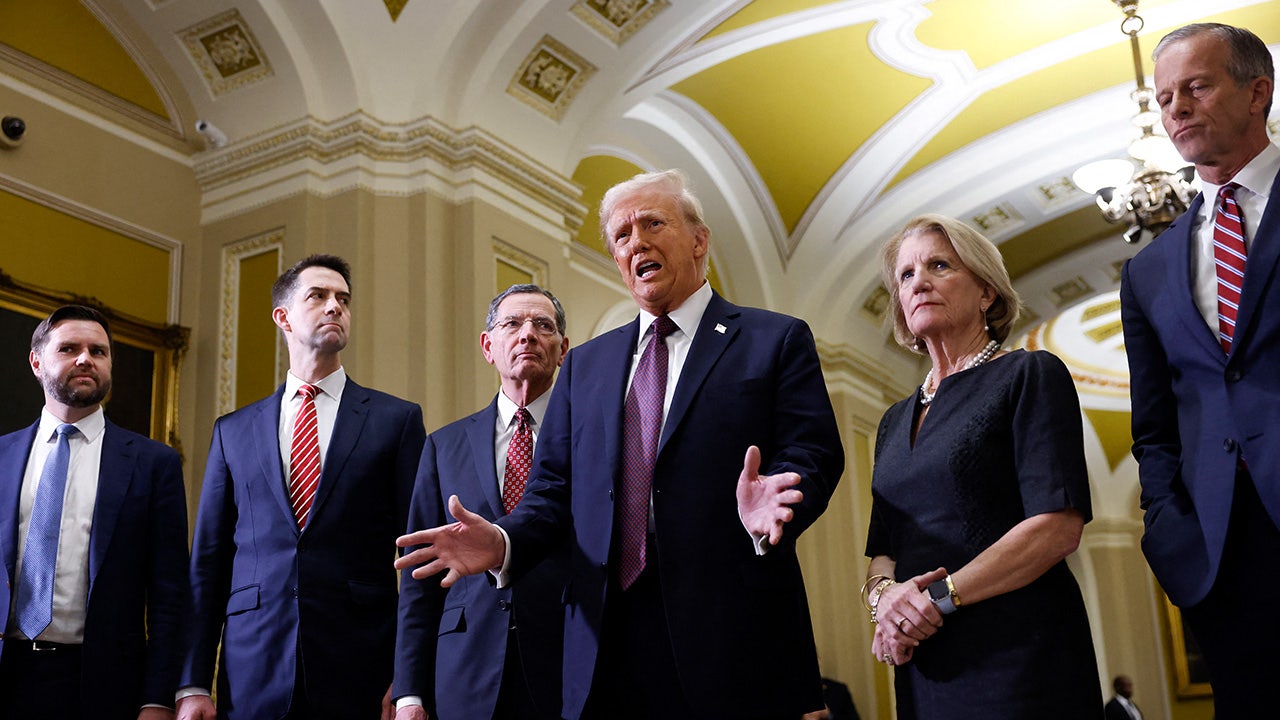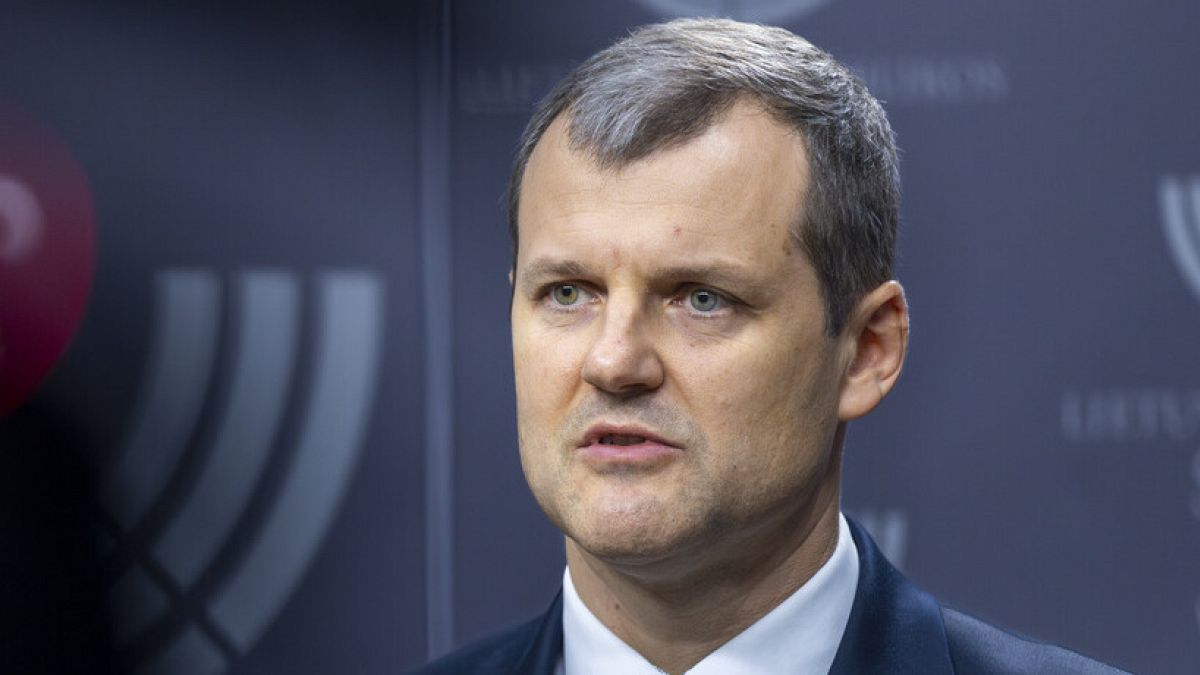Oregon
Oregon man walks into FBI office, confesses to ‘ice-blooded’ 1979 murder of Boston woman: prosecutors

An Oregon man recently walked into an FBI field office and confessed to fatally bashing a Boston woman over the head with a hammer nearly 44 years ago, prosecutors said Monday.
John Michael Irmer, 69, allegedly confessed to the “ice-blooded” 1979 murder and rape of Pennsylvania native Susan Marcia Rose, who he met at a Boston skating rink, the Suffolk County District Attorney’s Office said.
Originally, another man suspected of the violent crime was charged, but he was acquitted during a June 1981 trial.
Irmer strolled into the Portland FBI field office last month and told agents he met a woman with red hair at a skating rink around Halloween, the DA’s Office said.
The pair walked into a home on Beacon Street, which was under renovation at the time, before he grabbed a hammer and struck her in the head, the DA’s office said. He then allegedly raped her and fled to New York the next day.
Investigators said that Rose, a redhead, was the victim found bludgeoned at the Beacon Street home a day before Halloween, prosecutors said. She suffered fractures to the skull and cuts to the brain.
Irmer’s DNA matched with samples preserved from the murder scene, the Suffolk DA’s office said.
During his Monday arraignment, Irmer mostly hid behind a wall in court, CBS Boston reported. He was remanded without bail on charges of murder and aggravated rape.
Irmer allegedly told FBI agents in Oregon he wanted to “confess to several murders,” prosecutors said in court, the Boston Globe reported.

He also confessed to killing another person in the South. The case is still being probed, Assistant District Attorney John Verner said in court.
Irmer was convicted in the 1983 robbery and murder of a drug dealer in San Francisco, the newspaper reported. He spent 30 years in prison for that killing, Verner said.
“Nearly 44 years after losing her at such a young age, the family and friends of Susan Marcia Rose will finally have some answers,” Suffolk District Attorney Kevin Hayden said in a statement.
“This was a brutal, ice-blooded murder made worse by the fact that a person was charged and tried—and fortunately, found not guilty—while the real murderer remained silent until now,” said Hayden.
“No matter how cold cases get resolved, it’s always the answers that are important for those who have lived with grief and loss and so many agonizing questions.”

Oregon
Oregon State Football Hires New RB Coach

A rising star is orbiting the Valley Football Center.
According to multiple outlets, the Beavers are set to hire Buffalo running backs coach Ray Pickering to their coaching staff, filling the vacant running backs coach role left by new Idaho head coach Thomas Ford Jr.
Pickering coached one season at Buffalo, developing an all-MAC conference selection Al-Jay Henderson, who led the conference in rushing with over 1,000 yards.
Prior to his 2024 campaign in Buffalo, Pickering spent the 2023 season as the offensive coordinator at D1 FCS Norfolk State (VA), and the 2022 season as an analyst and recruiter at Texas for Steve Sarkisian.
Coach Pickering is widely respected by his peers, earning a place on the AFCA’s 35 Under 35, and FootballScoop.com’s Minority Rising Stars List.
It is not known at this time if Pickering will also fill Ford Jr’s recruiting responsibilities, or if another coach on the staff will fill that role.
More Reading Material From Oregon State Beavers On SI
RECRUITING: Oregon State Announces Full List of 2025 Transfers
TRANSFER PORTAL: Miami Tight End Riley Williams Commits To Oregon State
PREVIEW: Oregon State Men’s Basketball at Santa Clara
Oregon
A tale of patience and a bribe: Oregon State’s Parsa Fallah fulfills his basketball dream

CORVALLIS — Parsa Fallah can make it look so easy at times on the basketball floor.
Oregon State’s junior forward has turned more than a few defenders into a pretzel with an arsenal of post moves early this men’s basketball season. The 6-foot-9 Fallah is the third-leading scorer at 10.8 points a game for the 12-4 Beavers as they head into West Coast Conference road contests this week at Santa Clara and Pacific.
Yet it was anything but simple for one of Iran’s best young players to fulfill a dream to play basketball in the United States. It was a road that included paying an alleged $300 bribe to an airport security guard and living in various lodging venues in Senegal, Africa for six months.
When former Southern Utah coach Todd Simon identified Fallah as a player he’d like to add to his program, he acknowledged getting a player from Iran to the U.S. “would be a little bit of a process.”
The process as Fallah understood meant traveling to the U.S. Embassy in Senegal, Africa, as Iran doesn’t have an embassy. Once there, Fallah was told it would take a few days to secure a U.S. visa to travel to Utah. There, Fallah would begin college and play for the Thunderbirds during the 2021-22 season.
Days became weeks, and weeks became months.
“Every day I was like, should I go back home, or should I stay? I’m not sure if I’m going to get the visa. I don’t want to disappoint my family. My dad was like, just come home. No one will care. But as I’ve said, it’s a dream to come (to the U.S.) and play basketball. I’ll deal with it.”
Fallah grew up in Amol, a city in northern Iran with a metro population of about 400,000. Fallah describes it as city where people go to vacation “because it’s so green, and it has a beach.”
Fallah, who prefers to be known as Persian, is often asked about living in a war-torn country. He says it’s anything but that. Fallah said he’s never seen fighting anywhere near his city. The first time he saw a gun was in the U.S.
“It’s really safe. I was so confused when people would think and say stuff like that. It’s a really safe for us and people who are living there,” he said.
Fallah adds that after living for a few years in the U.S., he gets the thought process.
“I feel like the news is just telling you some part of the truth. It’s not just your country here. It’s my country, too,” Fallah said.
If it was a sport, Fallah wanted to try during his youth. Fallah dabbled in power lifting, and played volleyball and of course, soccer, as do most kids from his country. Fallah said it was easy. Kids would drop a pair of shoes down as goal posts in a field and play all day. His father Ezzat is a youth soccer coach.
A basketball coach spotted Fallah one day playing soccer and suggested he try his sport. Fallah didn’t like it at first, but at his father’s urging, stuck with it.
Turns out it can be a good sport for someone who grew to be 6-9. Fallah evolved into one of the country’s top young players, as he played key roles for Iran at FIBA U-19 and U-20 tournaments.
There’s only so much future for a basketball player in Iran, however. Fallah said basketball ranks no higher than fifth or sixth among sports in his country.
“It’s kind of a boujee sport back home,” Fallah said. “It’s like golf and tennis here. Rich people play that stuff.”
It was 2019 when Fallah arrived on Simon’s radar. In 2021, Fallah decided to make the move from Iran to Southern Utah. He packed a suitcase, put $500 in his pocket, hugged his parents goodbye and left for Senegal, where at the airport Fallah met his first hurdle.
The security officer told Fallah he needed a visa to enter the country. It was Fallah’s understanding that as an Iranian citizen, he didn’t need a visa. The two argued. Eventually, Fallah paid the man $300 to enter the country.
“He kind of blackmailed me,” Fallah said.
Fallah recalls arriving in Senegal on a Sunday, as he had a Monday appointment regarding his U.S. visa. Then he was told to wait for a call or email. Days went by. Weeks, even. Fallah stayed in a barebones hotel, each day checking his email to see if this was the day he’d get visa appointment.
Fallah had friends in the basketball community who helped him out financially, so he had a place to stay and eat.
Fallah recalls times when he felt scared and alone. But his dream was to play basketball in the United States. Even when he was mentally challenged, like one morning when he woke up and saw a giant spider crawling on the wall next to his bed. Simon, now coach at Bowling Green, said he and his coaches regularly checked on Fallah to make sure he was safe and fed.
One day, to Fallah’s surprise, he opened up his email and discovered he had been approved for a visa.
“Just the best day of my life,” Fallah said.
Fallah flew to Las Vegas, where he met Simon. They drove 2½ hours to Cedar City, Utah, where Southern Utah is located. As much as Fallah liked what he saw, the weird thing was eating.
“I remember my first meal. Coach bought me Chick-Fil-A. I couldn’t eat. I’m not sure if it was because I was stressed out, or nervous, but I couldn’t eat for two or three days,” Fallah said.
Fallah’s appetite quickly returned, but basketball, not so much. Because it took six months to get to Utah, the Thunderbirds’ 2021-22 season had about six weeks remaining. Fallah was nowhere near college basketball playing shape. He used 21-22 as a redshirt season.
Fallah came off Southern Utah’s bench during the 2022-23 season. It was five games into the campaign, during a game at Kansas, that Simon thought he had something.
“He comes off the bench, and had eight (points) and eight (rebounds) in 13 minutes,” Simon said. “Right then we knew, OK, he’s not afraid of anything. He was the best big on the floor in that game. We knew he was going to be special.”
The following year, Fallah started every game, averaging 13.2 points and 6.0 rebounds a game. Late in the 23-24 season, Fallah began to think about transferring. He loved Southern Utah and the coaching staff. It’s where he met his wife, Ellie.
“I was really sad to leave there. But I need to do the sacrifice to go somewhere bigger,” Fallah said.
Turns out, Oregon State was that somewhere bigger. Earlier in the season, Beavers coach Wayne Tinkle was scouting a Southern Utah opponent on video when he noticed Fallah. Tinkle told then-OSU assistant Eric Reveno, if Fallah goes in the portal, we need to get him.
Of the seven transfers to sign with Oregon State last spring, Fallah was the first one. He was ready for a “bigger” experience; Fallah has started each of OSU’s 16 games this season, scoring double figures nine times, with back-to-back 25-point games in December.
One entertaining aspect of Fallah’s game are his post moves. Fallah is difficult to defend near the basket one-on-one because of the complexity of moves he’ll put on his man. Simon said when he coached Fallah at Southern Utah, they’d tried to get him to shoot three-pointers.
“I think there’s a future in that for him, but when you’re shooting 65 percent from two or whatever he’s at right now…it’s hard to argue with him leaving the paint,” Simon said.
Fallah thinks his childhood activity paid off.
“I was one of those tall people that could really move my feet, and I also had a really good touch,” Fallah said. “It might be because I tried a lot of new sports. Soccer and volleyball helped me a lot.”
Fallah is unsure of the future beyond Oregon State. He’d like to take a run at the 2028 Olympics, playing for Iran. Fallah would like to remain in U.S. after college, but his family is a factor.
“I need to bring my family here. Family is really big for me, my little brother, my parents,” Fallah said. “I would love to stay here. I really love America. It’s like my second home.”
–Nick Daschel can be reached at 360-607-4824, ndaschel@oregonian.com or @nickdaschel.
Our journalism needs your support. Subscribe today to OregonLive.com.
Oregon
Former Oregon State star Isaiah Hodgins signs with San Francisco 49ers

Former Oregon State receiver Isaiah Hodgins is returning close to home after signing a futures contract Tuesday with the San Francisco 49ers.
The 6-foot-4 Hodgins, who played at OSU from 2017-19 and was a sixth-round selection by Buffalo in the 2020 NFL draft, grew up in Oakley, California, northeast of San Francisco.
Hodgins, who played for the Bills and New York Giants during the first five years of his NFL career, was on the Giants practice squad for the entire 2024 season. Hodgins has 60 receptions for 634 yards and seven touchdowns during a 31-game playing career.
A futures contract doesn’t count against an NFL team’s salary cap until the start of league’s next year. Teams can sign players who are part of a 53-man roster and on the practice squad or eligible for free agency to futures contracts.
Among Oregon State’s all-time receivers, Hodgins ranks second in touchdowns (20), sixth in career receptions (176) and seventh in yardage (2,322).
— Nick Daschel can be reached at 360-607-4824, ndaschel@oregonian.com or @nickdaschel.
Our journalism needs your support. Subscribe today to OregonLive.com.
-

 Business1 week ago
Business1 week agoThese are the top 7 issues facing the struggling restaurant industry in 2025
-

 Culture1 week ago
Culture1 week agoThe 25 worst losses in college football history, including Baylor’s 2024 entry at Colorado
-

 Sports1 week ago
Sports1 week agoThe top out-of-contract players available as free transfers: Kimmich, De Bruyne, Van Dijk…
-

 Politics6 days ago
Politics6 days agoNew Orleans attacker had 'remote detonator' for explosives in French Quarter, Biden says
-

 Politics6 days ago
Politics6 days agoCarter's judicial picks reshaped the federal bench across the country
-

 Politics4 days ago
Politics4 days agoWho Are the Recipients of the Presidential Medal of Freedom?
-

 Health3 days ago
Health3 days agoOzempic ‘microdosing’ is the new weight-loss trend: Should you try it?
-

 World1 week ago
World1 week agoIvory Coast says French troops to leave country after decades




















